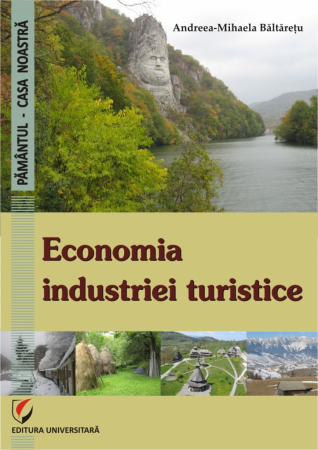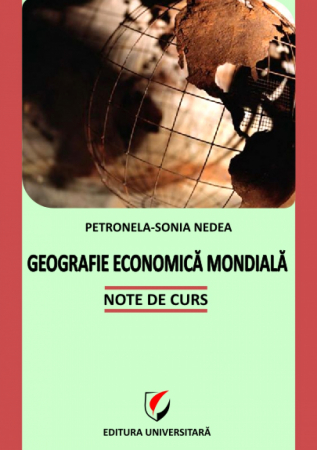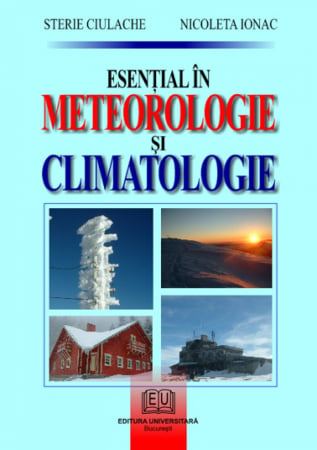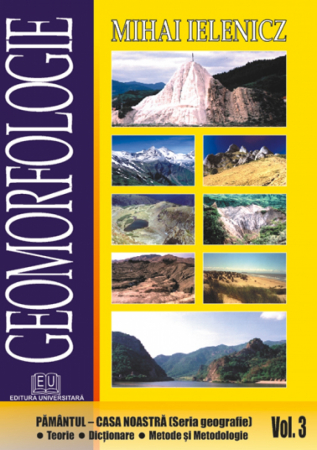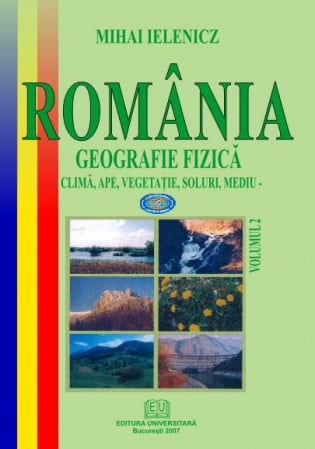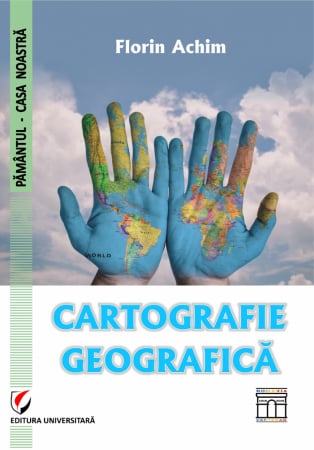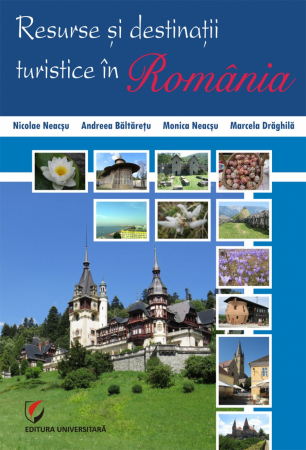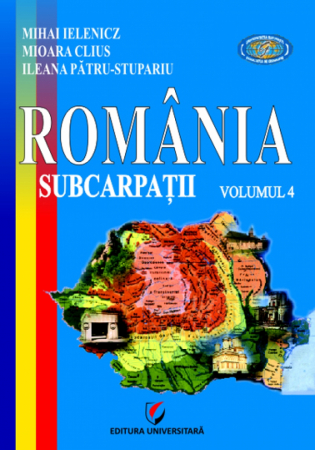ISBN: 978-973-749-046-9
Publisher year: 2009
Edition: III
Pages: 464
Publisher: Editura Universitară
Author: Laura Comanescu, Mihai Ielenicz
- Description
- Download (1)
- Authors
- Content
- More details
- Reviews (0)
The book "Romania - tourism potential" addresses not only students who are preparing to provide services in tourism but for all those who want to know and apply at least some of the information provided foncdul (teachers, travel agents, guides, instructors).
-
Romania - Tourism Potential
Download
Prof. PhD, a graduate of Geology-Geography in 1964 where he continued going through all the academic hierarchy. PhD in Geography in 1978 with his "Mountains of Buzau basin - geomorphology study", published in the Academy in 1984.
He won an Academy Award in 1975 for his "relief Romania" and in 1985 for his "Encyclopedia of Romania" and the title of Doctor Honoris Causa of the University Stefan cel Mare - Suceava, he was awarded over 25 honorary degrees, excellent and medals of different educational and scientific institutions home and abroad. Dean and Dean of the Faculty of Geography from 1992 to present, Director of Resort Geographic Orsova, Co-director of "research center and dynamic geomorphological land degradation"
Member of Faculty Council and University Senate since 1992, Chairman of National Committee for the undergraduate education programs (since 1996), member CNATDC, CNEAA, expert CNCSIS, improvements in the country and abroad (UK, Belgium, Turkey), President of the Olympics School of Geography (1996), President of the Society of Geography (2003), Vice President of National Committee of Geography (2000), Vice President of the Association of Geomorphology (2002), PhD (1993), a member of teams The editor of numerous magazines, etc.. He wrote alone and over 210 scientific papers together, participated in 62 research contracts (18 as director), 38 scientific books: "General Geomorphology" 1976, 2002, "Romanian Relief" 1975, "the hills and plateaus of Romania "1999," Physical and Geographical Dictionary "1999," General Geography "2001," Geography and Tourism Romania "2001," Europe Geographical Encyclopedia "2002," Romania Subcarpatii "2003," Romania - Physical Geography "2004," General Physical Geography . Fundamentals of physical geography "2005" Subcarpatii Romania "2005," Geomorphology "2007, 2010," Romania. Physical Geography. Climate, water, vegetation, soils, "2007," Romania. Plateaus and hills "2008," Dictionary of geomorphology "2009," General Physical Geography elements of cosmology "2009," Romania - tourism potential "2009, and numerous popular books, maps etc.
LAURA COMANESCU
Theoretical basis / 5
1. Tourism and tourist potential / 5
2. The tourist potential of the main environmental components; favorability and restrictions for tourist activity / 38
3. Differentiation of units according to the tourist potential on the Romanian territory / 58
Part II
1. Provinces, regions, areas and tourist centers / 69
1. Oas / 71 complex tourist area
2. Ignis natural region ‑ Gutai / 74
3. Natural tourist area ‑Rodna Mountains / 77
4. Rarau natural tourist area ‑ Giumalau / 83
5. Calimani natural tourist area / 87
6. Natural tourist area ‑ Harghita Mountains / 91
7. Trotus complex tourist area / Onesti / 97
8. The natural tourist area of the Bucegi Mountains / 101
9. Natural tourist area ‑ Fagaras Mountains / 106
10. The natural tourist area of the Iezer Mountains / 113
11. Cozia Mountains natural tourist area / 117
12. Capatanii Mountains tourist area / 121
13. Cindrel Mountains natural tourist area / 125
14. Parang Mountains natural tourist area / 129
15. Natural tourist area - Sureanu Mountains / 135
16. Hateg complex tourist area ‑ Deva / 140
17. Tarcu Mountains natural tourist area / 145
18. Godeanu Mountains natural tourist area / 149
19. Retezat Mountains natural tourist area / 152
20. Maramures tourist region / 157
21. Bucovina tourist region / 166
22. Bistrita tourist region / 177
23. Gheorgheni ‑ Ciuc tourist region / 193
24. Brasov tourist region / 205
25. The tourist region of the curve (Teleajen ‑ Buzau ‑ Vrancea) / 226
26. Tourist region Argesh Prahova / 242
27. Oltenia de Nord tourist region / 253
28. Banat tourist region / 264
29. Tourist region Apuseni Mountains / 275
2. Tourist province of hilly Moldova / 292
2.1. Campia Moldovei tourist region (northeast Moldova) / 293
2.2. Tourist axis Barlad / 301
2.3. Tourist axis Siret / 305
3. Tourist province Dobrogea / 309
4. Danubian-Getic tourist province / 324
5. Tourist province hills of Transylvania / 359
6. Province of hills and plains in the west of the country (Banato-Somesana) / 392
PART A III A
Methodology, means, applications / 409
1. The offer, the tourist program and their relation with the tourist potential / 409
2. Criteria for assessing the tourist potential / 412
3. Questionnaires used in various studies of tourist potential / 418
4. Presentation of the tourist potential in the advertising materials / 432
5. Presentation by the guide (group guide) of an objective, itinerary or a tourist resort / 437
6. Map and tourist legend. The place of the tourist potential in their content / 444
7. Field mapping of tourist objectives / 450
8. The plan of a review and a paper on the geography of tourism / 458
BIBLIOGRAPHY / 460
The years of the student were added when we "stole with our eyes" the experience of organizing and carrying out the trips led impeccably by my teachers in almost all places in the country but also in Bulgaria. All of them helped me after 1965 when I became an apprentice and then gradually organized the practical applications with the students in spring, summer, autumn and sometimes the director of the student ski camps. On the one hand, the numerous trips from the I.T.H.R. portfolios had a special place in completing the preparation for tourism. and O.N.T. throughout Romania but also abroad, where I provided guidance services, as well as co-opting in the training teams for the profile activities in the two institutions.
Thus, Geography was my chosen profession and tourism gradually became a hobby in the second basic direction in activity and which directly or indirectly had an essential role in my training as a manager.
The cameras and the video camera were my permanent companions, contributing to the creation of photographs, slides, films in which the scientific elements were combined with the artistic ones. To these are added the rich and varied collection of books on tourism, many of them being sources of training for those who addressed me.
The experience and desire to present what is essential and necessary for various forms of tourist activity have guided me on the one hand in writing many books, guides, articles, albums for this field, and on the other hand in thinking and presenting lectures and conferences for students, teachers and all those who wanted to know something about my "accumulations". Moreover, I put my shoulder in the creation of a tourism specialization in the faculty, of a profile student circle and in thinking of some forms of practice that would bring the students as close as possible to the specific activities.
It was thus necessary to put an end to this stage, which I would conclude with a synthesis study carried out together with a young colleague who established herself through talent, depth and passion in the profession of geographer but also in tourism knowledge.
It was written for several years, a situation determined on the one hand by the desire to find a structure and rendering of problems and information as adequate as possible to the level of training but also in accordance with the directions imposed by the title. On the other hand, we did not want to fall "on the line of the many" who write and brag about mistakes often of a general nature taken from various works (which he forgets to quote), dictionaries, statistics, internet, etc. but which omit the essential - the cruel reality of the land.
As a result, we chose a form of presentation in three sections with different purposes. The first has more theoretical character, in it we wanted to present our point of view on some notions that we consider basic for understanding some aspects of the complex mechanisms of tourism. We insist not only on their scope but also on the relations between them, which are also established in a scheme.
The second includes the presentation of the national tourist system based on the existing tourist potential but in interference with some elements regarding the material basis and the specifics of the forms of activities that are carried out. A structural scheme was chosen which includes units with a degree of potential complexity and different relationships and which are part of a hierarchical system consisting of provinces - regions - areas - axes - centers-localities and tourist objectives. There is a lot of information but we consider it insufficient to highlight the huge tourist fund too little known and capitalized.
The realization of the last section, which has a methodological and applicative character, we wanted to write it out of the desire to present some lucrative aspects necessary in the process of understanding the fact that tourism is a complex social phenomenon that must be treated as such. To achievee not only the findings regarding the potential are sufficient, but they must be subjected to a proper capitalization for which both the most adequate means of knowledge are needed, but also the realization of endowments and the provision of services.
The paper is addressed not only to students who are preparing to provide services in tourism but to all those who want to know and apply at least part of the information provided (teachers, travel agents, guides, instructors).
Her writing thanks us for the moment, but since many problems have remained partially developed and argued and others need to be clarified, we intend to resume it, perhaps in a different structure.
That is why the words "from the beginning" present in the name of this preface.
Professor Mihai Ielenicz

6359.png)
![Romania - Tourism Potential [1] Romania - Tourism Potential [1]](https://gomagcdn.ro/domains/editurauniversitara.ro/files/product/large/romania-potential-turistic-2859-737388.jpg)

